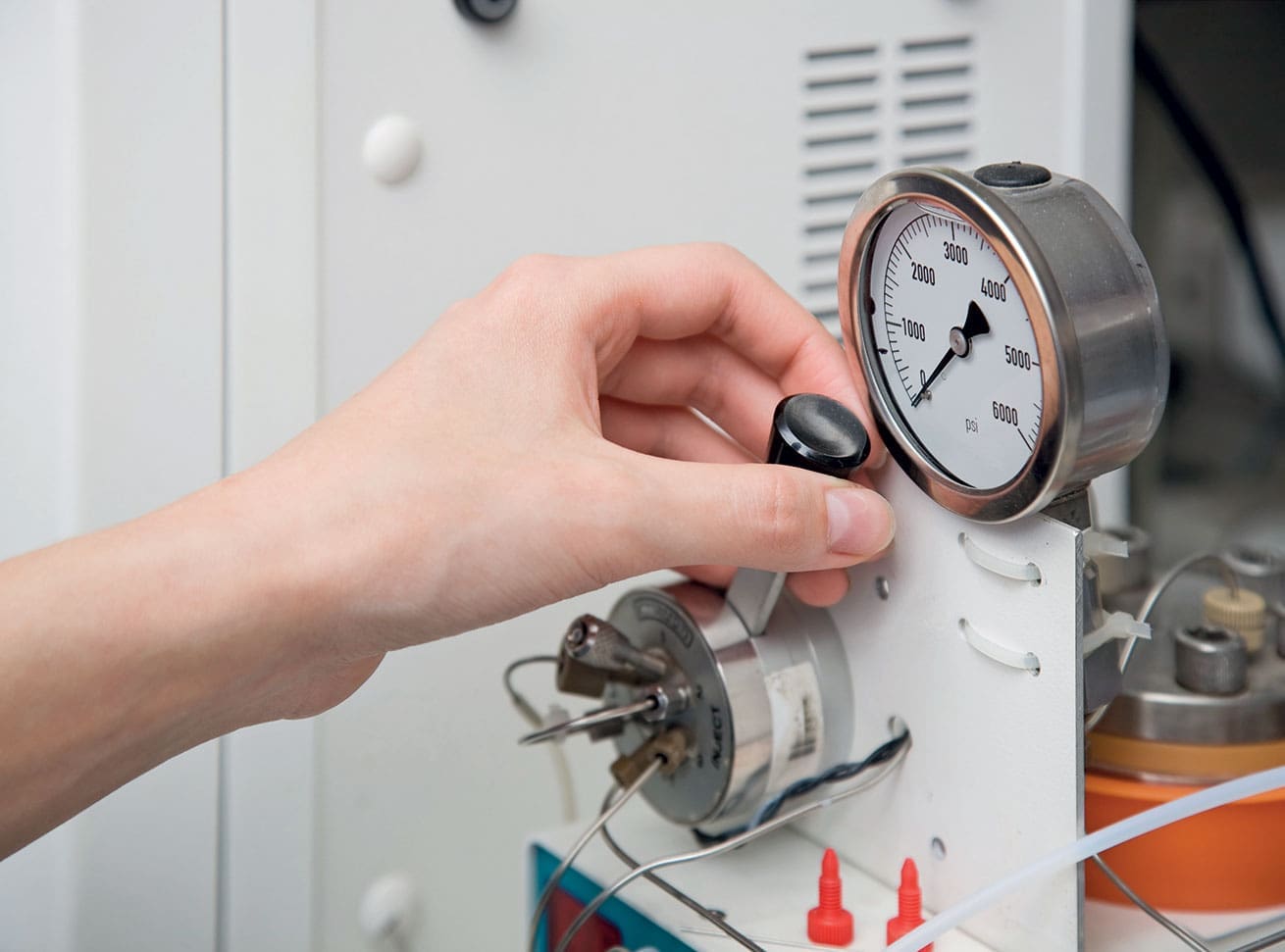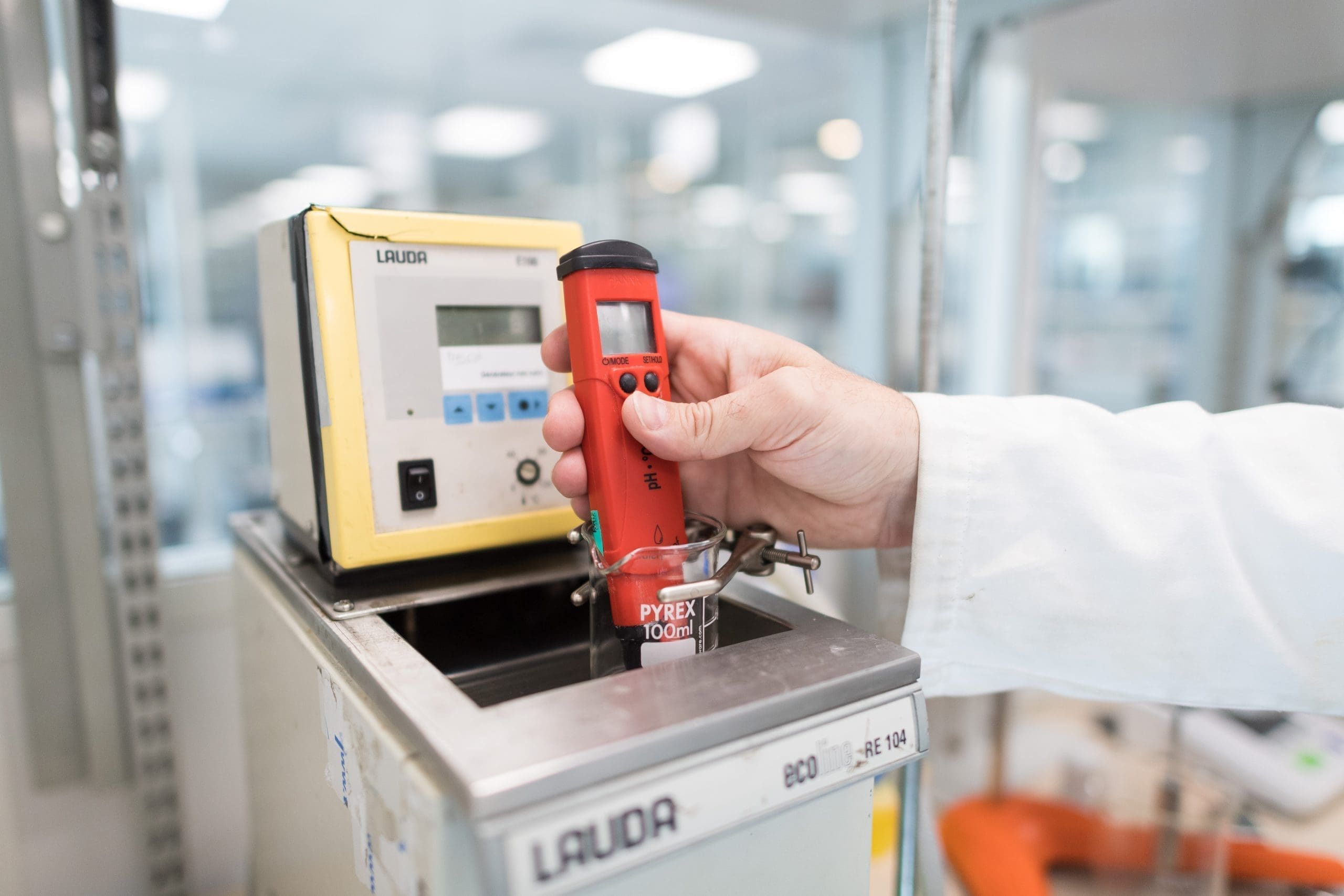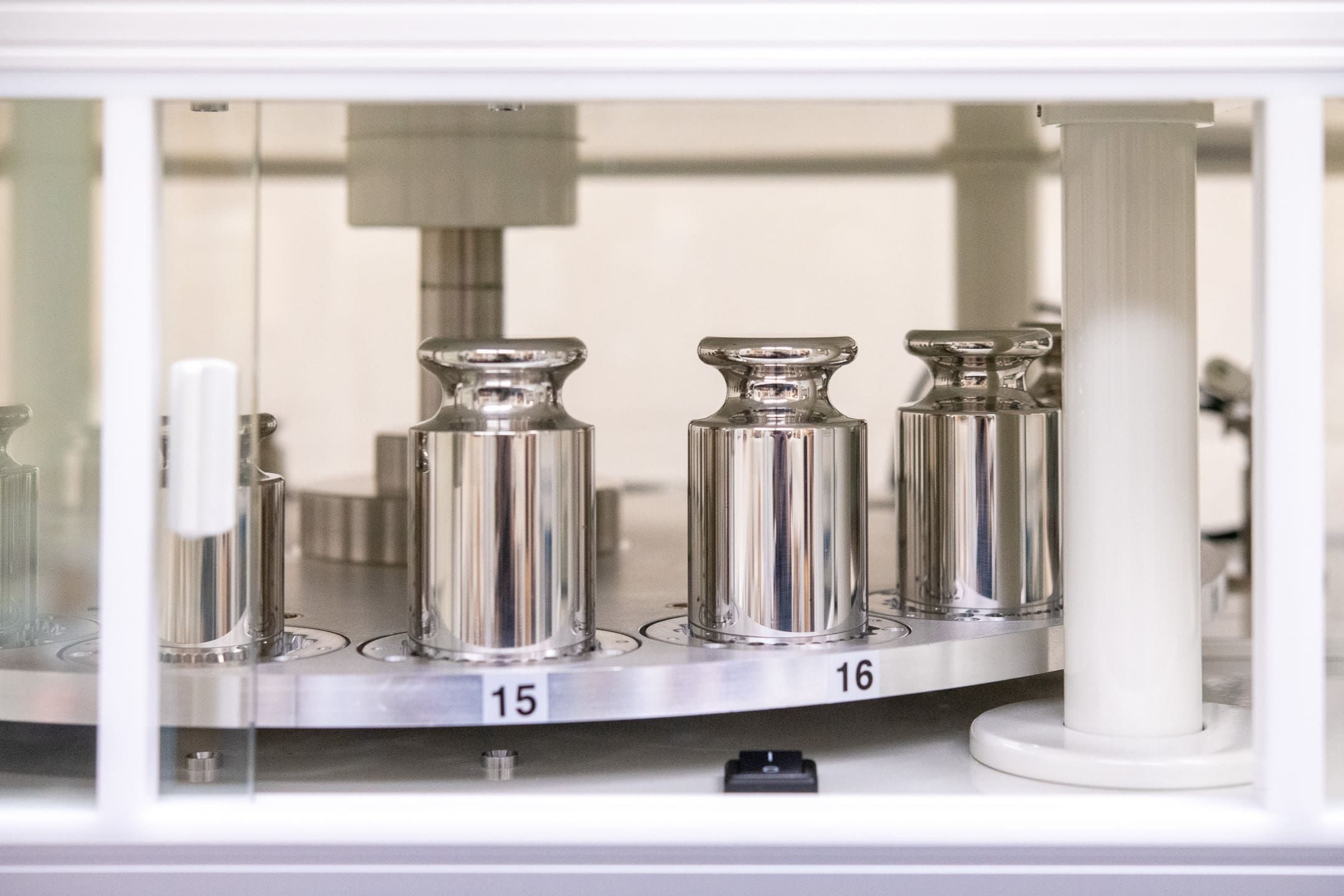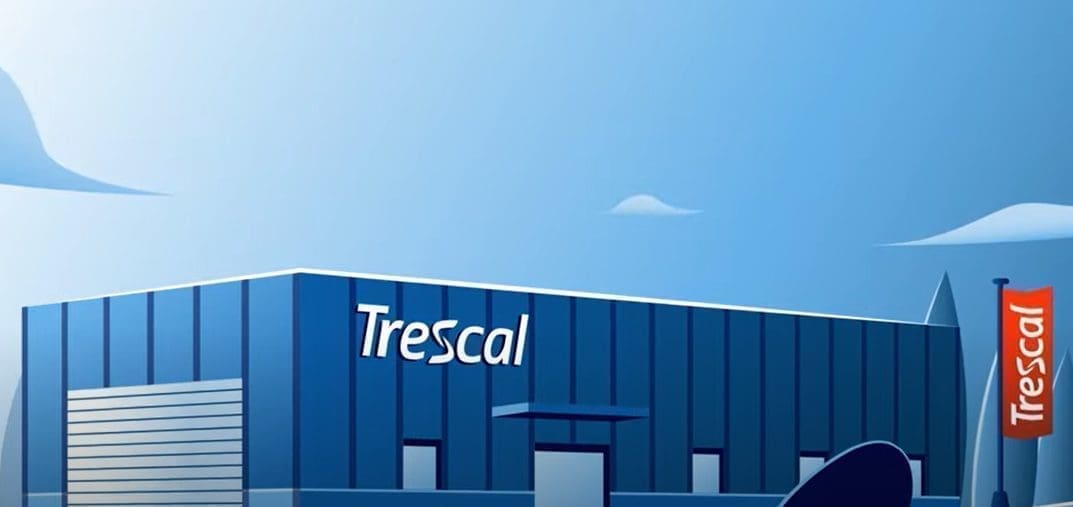If there is one thing that every pharmaceutical company should never compromise on, it is the quality of their products. Even a tiny variance can lead to life-threatening situations for the users. To ensure the high quality of the end products, all pharma companies must ensure that all of their equipment is well calibrated. At the same time, they must have confidence in the performance and results of the instruments they use to calibrate their manufacturing equipment.
This is where accredited calibration labs come in. These labs ensure that the equipment in pharmaceutical companies is calibrated as per the required standards, which can produce products that match the pharmaceutical quality as set by the FDA. You will see a distinct difference in the quality and accuracy of the calibration services provided by accredited and non-accredited calibration laboratories. Let’s see what the pharmaceutical companies are subjected to, so that they can deliver high-quality products.
Primary Principles Employed in Pharmaceutical Companies
Pharma manufacturing standards need to undergo 3 principles to achieve high quality. They are:
1. Validation
This refers to the practice of documenting and proving that a procedure or process consistently leads to the expected results. This is a good manufacturing practice where data is collected and analyzed to verify that a process operates within the set parameters. The validation process is done to prove the consistency of the expected results of any process, procedure or method. Additionally, it verifies that the quality standards and compliance are being met by the products in real-time. The validation program assures that a pharmaceutical facility is meeting the pharmaceutical cGMP guidelines as set for the industry by the regulatory bodies.
2. Qualification
Validation is mainly concerned with documenting processes. Qualification is the same approach, but it is applied to equipment, systems or machines instead of processes. Qualification can be considered to be a part of the validation process. It can be further divided into Installation Qualification (IQ), Operation Qualification (OQ) or Performance Qualification (PQ).
3. Calibration
This refers to the process where you can determine if an instrument or device is producing accurate results within the specified limits when it is compared to traceable standards of measurement. This is important for justifying the processes of Qualification and Validation.
In this article, we will focus on calibration and other elements associated with it.
Defining Calibration
Calibration can be defined as the technique of correcting or setting a measuring device by adjusting it to match a dependably known and unvarying measure. It can also be considered as an association between measurements —eone which is a scale or the accuracy set with one piece of equipment, and another measurement which is made as similar as possible to a second piece of equipment.
The instrument or equipment with the known accuracy is known as standards. All the other instruments are measured against this standard. It is important to know that the standards vary from one country to the other depending upon the type of industry. The manufacturers, on the other hand, assign the criteria for measurement and suggest the level of calibration and frequency depending upon the requirements of their industry, the frequency with which the instrument is used and the specific application.
Calibration Achieves 2 Main Objectives:
1. It checks the accuracy of an instrument
2. It determines the traceability of the measurement
A report showcasing the error in measurements is created during the calibration procedure. When instruments are not calibrated regularly, their quality, safety and consistency are drastically reduced.
Considering the importance of this procedure in various industries, let us take a look at how it all started.
The Origin of Calibration
The term ‘calibrate’ came into use as recently as the American Civil War when artillery was being described and discussed. The word ‘calibrate’ is thought to be derived from a measurement of the caliber of a gun. It is believed that ancient Egyptian, Indus Valley and Mesopotamian civilizations created the earliest known systems of calibration and measurement.
The term ‘calibration’ was most likely associated with the precise division of linear distance and angles using a dividing engine and the measurement of gravitational mass using a weighing scale. Both these forms of measurement and their derivatives were sufficient to support almost all the technological and commercial development from the earliest civilizations until about 1800 AD. It gained momentum during the Industrial Revolution.
Calibration During the Industrial Revolution
The Industrial Revolution saw indirect measurement techniques being used frequently. Indirect measurement was when the quantity being measured was derived functionally, based on the direct measurements of dependent quantities, which is the basis of calibration.
There were recorded instances of the measurement of pressure where indirect measurement processes were used. Before that, the hydrostatic manometer was commonly used as a pressure measurement device, but it wasn’t ideal to measure high pressures. The need for high pressure measurement was practically addressed by Eugene Bourdon with the Bourdon tube pressure gauge. This brought the concept of calibration into the manufacturing sector and other industries, and there has been no looking back since.
Importance of Regular Calibration
Calibration is responsible for defining the accuracy of any measurement and its quality that is recorded by any instrument. When you start working with any instrument, it must be calibrated well, thus assuring you of accurate results. However, over a period of time you will start observing a ‘drift’. This holds true while using particular technologies or measuring particular parameters such as temperature and humidity. Even overuse, wear and tear, or external factors such as mechanical or electrical shocks may cause a drift in measurements. The drift will occur depending on how quickly the instrument degrades owing to these factors.
Calibration minimizes such uncertainties by assuring the accuracy of the test equipment. When you regularly calibrate your equipment, you can eliminate the drift at its budding stage instead of allowing it to grow till it affects the measurements in significant ways. You need to be confident in the measurements of your equipment at all times, which calls for a regular calibration of equipment throughout its lifetime for reliable, accurate and repeatable measurements.
Calibration helps in quantifying and controlling errors and uncertainties within various measurement processes to an acceptable level. Further, it helps in improving the accuracy of the measuring device, which in turn improves the quality of the end product. In short, regular calibration allows pharmaceutical companies to have confidence in their results which they can record, monitor and control.
Purpose of Calibration
Calibration is primarily done to achieve 5 main purposes which are:
- To make sure that the readings of equipment or instruments are consistent with other measurements and display the correct readings every single time
- To determine the accuracy, precision, reliability and deviation of the measurements produced by all the instruments
- To establish the reliability of the instrument being used and whether it can be trusted to deliver repeatable results each time
- To map the ‘drift’ as documented. Instruments have a tendency to produce inaccurate measurements over a period of time, following repeated use.
- Ensuring that the industry standards, quality assurance benchmarks such as current good manufacturing practice (cGMP) and government regulations are adhered to.
What is Instrument Calibration?
Instrument calibration can be defined as the process of comparing the measurements made by the instrument to be calibrated against a known measurement of either standards or an instrument known to be making measurements that exceed the acceptable limits of accuracy and precision. Usually, calibration labs prefer a standard with 10 times the accuracy; however, most regulating organizations and authorities also accept a 3:1 accuracy ratio.
Frequency of Instrument Calibration
How often you conduct instrument calibration mainly depends upon its tendency to drift from the true measurement and how it impacts the quality of the end product. Examine each instrument being used and study its behavior. Based on this information, you can design a calibration schedule for each instrument. The interval between calibrations can vary as:
- Weekly
- Monthly or bi-monthly
- Quarterly, semi-annually or annually
If the instruments are used quite frequently or when critical measurements are taken regularly, it is advised that calibration is done every week. Some instruments need to be calibrated once or twice every month without fail to ensure that the measurements stay accurate. Some instruments might not be used frequently or do not have the tendency to show a drift easily. They can be calibrated quarterly, semi-annually or annually. Even if the measurements seem accurate, calibrate it regularly. If you notice any change in measurements before the scheduled timeline, calibrate the instrument immediately instead of waiting for the scheduled date.
When Should the Measuring of Instruments be Calibrated?
The frequency of calibrating the measuring instruments depends on a number of different factors. The following is a guide outlining when instruments need to be calibrated as a part of good manufacturing practice:
- As soon as you bring in a new instrument, you should calibrate it before you test it out.
- Before and after you take critical measurements
- After any instance of electrical or mechanical shock or a similar event that includes a fall, bump, etc. If there is an electrical surge, calibration must be followed by a safety check too.
- When you suspect that the accuracy of measurements being produced is questionable
- If there were any repairs or re-qualifications of the instrument
- As per requirements which depends on the criticality or is included as part of a calibration schedule
- Depending on the task and processes as some require calibration to be conducted before the work starts
- According to the manufacturer’s recommendation
Commonly Used Calibration Methods and Procedures
There are different ways that are used to calibrate an instrument. These methods are chosen based on the desired results of the calibration and regulatory authorities’ requirements, like FDA guidelines. Let us look at three such procedures:
- Standard Calibration: This method is mostly preferred for calibrating instruments that are non-critical to quality or are not required for accreditation and license purposes. Even if they are required for licensing purposes, they have to be calibrated to be effective. Use traceable standards and document its performance.
- Calibration with Data: Procedures for calibrations with data are similar to that of accredited calibration. The only exception being that these procedures are not accredited to the ISO standard. Moreover, they are not accompanied by data on measurement uncertainties.
- ISO 17025 Accredited Calibration: This has to be the strictest method of calibration. Generally, it requires a measurement report which has the details of the measurements that are made against a standard of ‘as found’ (before calibration is started) and ‘as left’ (once the calibration is completed). Every single standard and measurement used for the procedure has to be traceable to an acceptable national or international organization for standards. If the calibration is done by a calibration service provider, they must issue a certificate of the same.
Contents of Calibration Certificate
This certificate consists of crucial details about the equipment’s condition. A calibration certificate is required by the end-users of the products that are tested with the concerned instrument.
Every calibration certificate has a unique serial number which associates one calibration with one instrument. Most of them would cite the basis of the calibration procedure too. The format of the certificate may vary from one geographical location to another. Some of the information you can get from a calibration certificate may include the following:
- Dates and environmental conditions at the time of calibration
- Traceability statement
- Received Condition & Returned Condition
- In tolerance/meets all specifications
- Identification of the standards used during calibration. Associates specific traceable instruments with this certificate.
- Calibration procedure used, including revision level if applicable.
- Calibration interval and source of recommendation
- Contact information for inquiries about this Certificate
Some of the calibration standards include MIL-STD-45662A, A2LA Accreditations and ANSI/NCSL Z540-1, with each one having their own set of requirements for establishing and maintaining a calibration system. These standards help in controlling the accuracy of the measuring and test equipment, and measurement standards used to assure that the services delivered are satisfactory.
Calibration places high emphasis on quality. Let us look at other practices that ensure that the quality in pharmaceutical industry is maintained high at all times.
Brief of Quality Assurance and Quality Engineering
Pharmaceutical companies must focus on the quality of their products, without which they can put the user’s life at risk. Quality management is an integral part of the any company that falls under the pharmaceutical umbrella. Quality assurance and quality engineering form two important branches of the quality management’s plan. Though they sound the same, there is a difference between these practices and it is extremely crucial that the difference is understood clearly by the employees of the pharmaceutical company. Let us learn about them.
The practice of quality assurance focuses on planning, documenting and agreeing on a set of guidelines that are crucial for assuring quality. It is a managerial tool and is process-oriented. Usually, planning for quality assurance is undertaken at the beginning of any project. It draws the software specifications and company standards. The purpose of QA is to prevent defects from entering the process in the first place.
By undertaking QA at the beginning of every project, you can mitigate the risks that would have been identified during the specification phase of the project. It can be said to be a pro-active management practice which is used for assuring a stated level of quality for a project. QA planning activities usually include quality plans, inspection and test plans, and the selection of defect tracking tools. Training the people is an extremely important aspect, without which the objective of QA cannot be achieved. Communication is extremely important, and the risks and remedies comprised within the risk mitigation strategy must be clearly communicated by the concerned teams.
QUALITY CONTROL (QC)
On the contrary, Quality Control comprises of activities that are designed to determine the level of quality of the processes. Quality control is a reactive means whereby the quality is monitored and gauged. It is a corrective tool and is product oriented. All the operational activities which fulfill quality requirements are included as a part of QC.
These activities and techniques are agreed on with customers and/or stakeholders before the project starts. QC consists of the verification of output conformance as per the desired quality levels. The standards of the process are checked against the customer requirements. Checks are conducted at different planned points in the development lifecycle of the project. Additionally, testing and code inspections, and structured walkthroughs are carried out to make sure that the solution meets the agreed set of requirements.
When you take the services of an accredited calibration laboratory like Trescal, you can be assured of accuracy and high quality. Furthermore, you can be confident of the calibrating services as it has greater integrity as compared to its non-accredited counterparts. Trescal is recognized and vetted by an independent accreditation body and has been certified by them to be competent to deliver the highest standards of calibration service.




